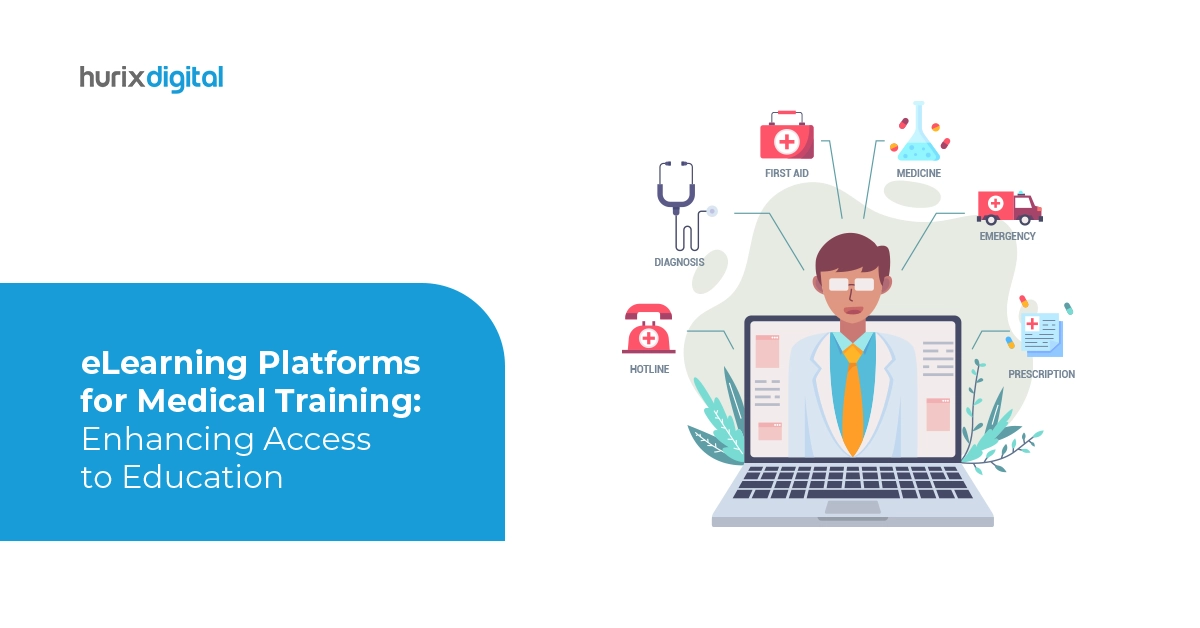
The Vital Role of Healthcare Instructional Designers
Summary
Explore the critical role that instructional designers play in healthcare, focusing on how they create effective training programs that enhance learning outcomes for healthcare professionals.
Technology is advancing at a breakneck speed, and due to this, all professionals have to update themselves constantly.
When it comes to healthcare, the training needs become all the more unique. Since their profession demands them to act quickly and accurately, their learning should equip them to make such decisions effectively.
When they learn, they don’t just get to know the theoretical aspects of their field. They also need to understand their subject in detail to be able to apply their knowledge in real life.
As professionals work with patients who are ill and, at times, critically so, they need to be able to use their knowledge to save a life.
Healthcare is an area that requires ongoing learning to update oneself constantly. Instructions in a healthcare course should allow the students to relate the content to several aspects of the human body, like anatomy, physiology, pharmacology, and pathology.
It is the reason a healthcare instructional designer Is vital in the space of healthcare.
Although the best way for medical professionals like doctors, nurses, and pharmacists is to learn on the ground, there is a need for a highly-qualified healthcare instructional designer too.
Studying in a classroom with a trained instructor can help these professionals to understand the risks involved in carrying out procedures and the factors they need to consider while prescribing or administering a treatment course.
Let us see the other roles that instructional designers play in the field of healthcare.
Standardize Procedures and Information
Healthcare is an area where new information gets generated frequently. However, medical professionals need to understand what is credible and effective so they use only the right methods to treat patients.
Knowledge-sharing thus becomes vital in this field to propose time-saving and cost-saving treatments.
When these professionals are based in different parts of a country, it may get challenging to distribute this information to the hinterlands.
Healthcare instructional designers keep a tab on new developments. They inform their students of the most effective and widely-used methods, thereby standardizing procedures.
This practice ensures that all healthcare professionals are on the same page as they receive consistent and comprehensive training, regardless of their location or institution.
Analyze Training Needs
One of the most crucial aspects of the job of a healthcare instructional designer is to identify gaps in the healthcare facility.
Trained professionals use various tools to understand a group’s training needs. They use this information in developing training programs to address those gaps.
When they create training programs after analyzing the needs, they can choose and adapt the modules for both online and classroom sessions. Depending on the area of training, they can create online or mobile learning modules.
Such modules allow healthcare professionals to learn at their pace and at their chosen time.
In the current times, instructional designers also use AI-based learning management to enhance the effectiveness of learning. Apart from this, instructional designers also use engaging training tools like videos and animation for better learning.
A healthcare instructional designer also keeps updating their course content to reflect new research, best practices, or changing policies.
Ensure Compliance
Healthcare is a highly regulated space. Apart from the requirements of the regulatory bodies, hospitals can have their own compliance norms. These rules help the healthcare facility be on the right side of the law and ensure that all doctors and nurses follow a common code of conduct.
In the absence of these norms, there could be gaps in treatments and procedures. Moreover, compliance helps minimize medical errors and protect patient privacy.
In short, compliance helps improve the quality of healthcare and ensure that all healthcare providers offer the same standard of care to patients. Health instructional designers give a good deal of importance to compliance when designing training modules.
Provide Quality Care
Experienced instructional designers can help healthcare facilities improve patient outcomes. Experienced and professional designers will design programs to enhance the overall knowledge base and skills of healthcare professionals.
It will lead to better diagnosis, treatment, and patient care.
The instructional designer will ensure that healthcare professionals prioritize patient safety at all costs. They will teach evidence-based and appropriate responses for all kinds of situations.
It will ensure patients get the best treatments at an appropriate time and with reduced errors and infections.
Apart from this, experienced instructors will take care to ensure that all discussions and treatments are centered around the patients. They will teach the professionals to keep the families involved while making essential decisions and planning the course of treatment and care.
Every family is different and may have their unique needs and preferences. Healthcare professionals will ensure that medical professionals tailor treatments for the families.
Conclusion
Healthcare is a highly regulated space with its own unique demands and needs. A healthcare instructional designer who caters to this segment ensures they are up-to-date with the latest information.
They can help improve the quality of care, reduce costs, and ensure compliance with regulations and standards.
All of this, when done together, can improve the reputation of a facility and aid them in offering premium care to patients.
Healthcare facilities looking for a user-friendly and seamless experience can use SaaS-based products that can be customized as per their specific needs. To know more, you can click here.

Passionate about developing innovative business models for customers in the content space. Primarily focused on the markets: US, UK, Europe, Middle East and APAC with 18 years of experience. Focused on collaborative working with internal teams such as Technology, Operations, Finance, and Marketing to ensure the voice of the customer is in everything that the company builds.







